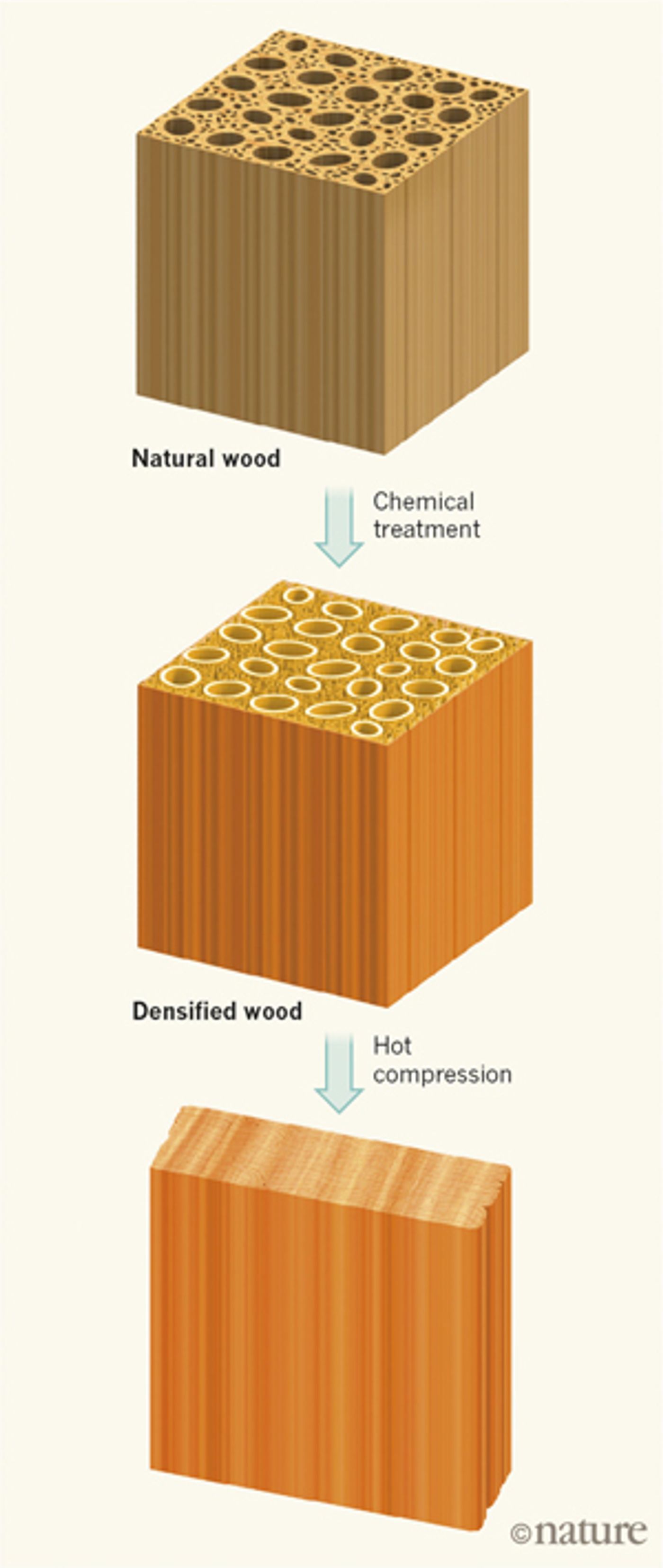Future skyscraper and cars may be made up of a wood stronger than steel
Wood is the most abundant, cheap, light and renewable material except being not suitable for building skyscraper and cars. The low density of wood makes it very suitable for building boats, ships since the dawn of human civilization but this low-density feature make wood not suitable where high strength and stiffness is desired. Scientists have tried many different physical and chemical methods to increase the density and strength of the wood without much success. However, this may change based on the recently published paper in Nature. In this paper, authors describe a method of chemical treatment combined with compression at high temperature that leads to a substantial increase in strength and stiffness of the wood.
The method described in the paper starts with the chemical treatment of wood using sodium hydroxide, and sodium sulfite, a somewhat similar procedure is used to make paper from pulp. Chemical causes partial removal of lignin and hemicellulose from wood. Lignin is second most abundant biopolymer in nature which provides support to cell wall and protection from natural degradation. It is also one of the most difficult biodegradable natural material in the world. Hemicellulose is a branched short chain polymer, unlike cellulose which has more extended un-branched chain polymer. Chemical treatment is followed by compression of wood at high temperature (100°C), which leads to 3-fold increase in its density and collapse of pores in the wood structure. This modified wood is too dense to float into the water but has around 11 times more stiffness and strength than untreated wood. Previous attempts by other scientists to increase the strength of the wood were not that successful as only 3 to 4-fold strength could be achieved.
As evident by scanning electron microscopy, crushed cellulose tubes in the wood crumple and interlock upon undergoing chemical, heat and compression process mentioned in the paper. These cellulose tubes are like nanofibers, which collapse along their growth direction, giving unprecedented strength and stiffness to the wood. To test the strength of the modified wood, authors of the paper fired metal pellets at the speed equivalent of ballistic air gun. The modified wood of just 3 mm thickness could halt a metal pellet traveling around 30 meters per second. It is much slower than a bullet but comparable to the speed of a moving car at 60 miles per hour equivalent accident. In future, it is possible to make a car frame using this modified wood which is more natural, light-weight and cheaper to manufacture than steel.
Note: Credit NPG Press
Previous methods have also achieved an increase in density of the wood by a factor of three, but those processes involve only heat compaction. Most likely in the present work, the chemical process in combination with heat resulted in significant increase in strength and density. However, there are questions which remain to be answered, for example, feasibility for large-scale commercial production and susceptibilty to biodegradation due to removal of lignin during the chemical process. This modified wood may also swell considerably when exposed to water which is not a desirable property in an industrial material, but authors of the study downplay the swelling property.
The chemical and physical process used in this paper was found to be effective across the wood species. Authors of this paper expect this modified wood may replace most industrial metals and alloys, making it a cheaper, high-performance, lightweight substitute.








